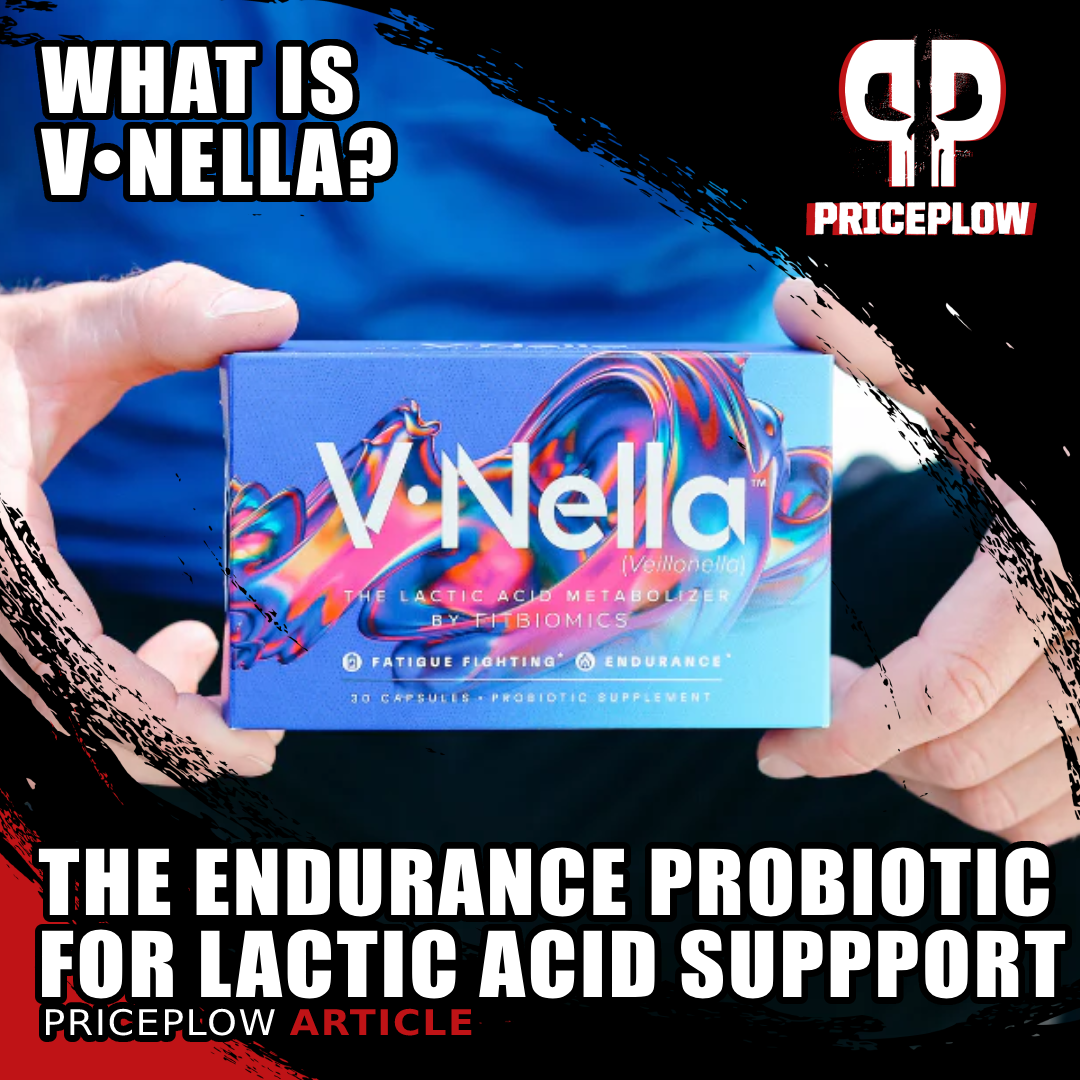
Meet V•Nella, the endurance probiotic! Designed to help metabolize lactic acid, it's shown promising results in early studies, improving performance with Veillonella atypica FB0054. V•Nella could be the future of specific-use probiotics, especially for endurance athletes looking to push further.
This article is about V•Nella, a groundbreaking probiotic supplement from Fitbiomics designed to enhance athletic performance by metabolizing lactic acid. V•Nella contains Veillonella atypica FB0054, a unique bacterium isolated from elite athletes' microbiomes, which converts exercise-induced lactate into propionate — a beneficial short-chain fatty acid that can improve energy production and reduce fatigue.
We'll explore how V•Nella works, the science behind its development, and the promising research that suggests it can help athletes push beyond their limits. Additionally, we'll discuss the current state of evidence, including animal and human studies (V•Nella improved endurance in 5 of 7 individuals in their first pilot study), and what future research may reveal about this innovative approach to boosting endurance and recovery.
If that sparks your interest, you can use PricePlow to sign up for our Fitbiomics news alerts and visit FitBiomics' website to give it a try with our PRICEPLOW affiliate coupon code, but most will want to read the full story below first:
Fitbiomics V-Nella – Deals and Price Drop Alerts
Get Price Alerts
No spam, no scams.
Disclosure: PricePlow relies on pricing from stores with which we have a business relationship. We work hard to keep pricing current, but you may find a better offer.
Posts are sponsored in part by the retailers and/or brands listed on this page.
This area is reserved for Team PricePlow's upcoming videos.
Subscribe to our channel and sign up for notifications so you catch it when it goes live!
Here at the PricePlow Blog, sports and active nutrition supplements are our bread and butter. We cover tons of workout-focused formulas designed to help athletes train and compete at their potential.
It's only natural, then, that we spend a lot of time writing about lactic acid. Also known as lactate, this molecule is produced as a byproduct when the body shifts into anaerobic glycolysis, a type of energy production that occurs when the demand for oxygen exceeds the body's ability to supply it. In other words, this means you're training over your lactate threshold, probably at or near your VO2max (the intensity level at which your body uses all the oxygen it can produce).
The Lactate Paradox: Villain or Vital Energy Source?
Historically, the sports nutrition world has viewed lactate as a villain, rooted in the belief that lactate buildup causes muscular fatigue and compromises performance during endurance sports. Recent research has questioned this by showing that it's not the lactate molecule itself causing fatigue, but rather the metabolic conditions surrounding lactate synthesis.[1] These conditions include the lowering of muscle pH by hydrogen ions produced alongside lactate, which affects muscles' ability to contract, the enzymatic synthesis of ATP, and muscle cell calcium uptake.[2]
Understanding lactate production
In fact, lactate can actually support certain aspects of athletic performance.[1,2] To understand how, we need to consider that during anaerobic glycolysis, glucose is converted into pyruvate, generating 2 molecules of ATP per glucose molecule. This is a very inefficient energy production pathway compared to aerobic glycolysis, which produces a whopping 32 ATP molecules per glucose.[3]
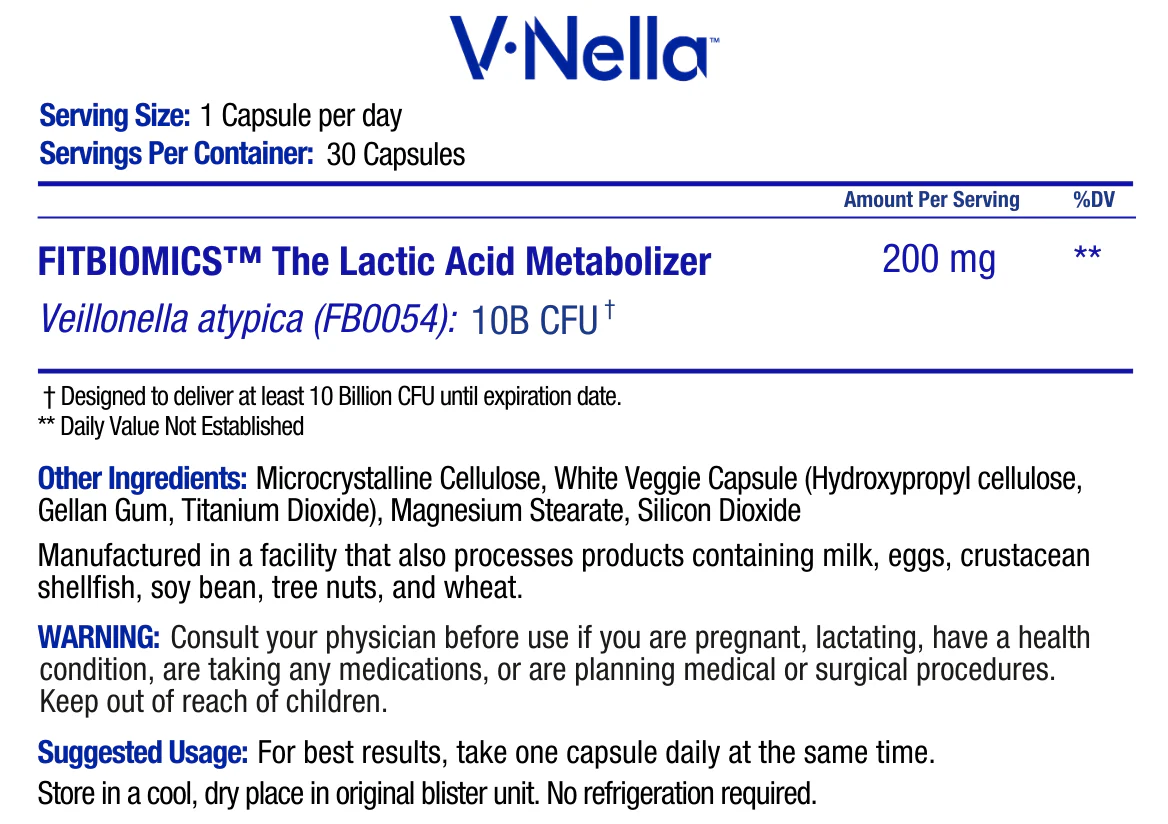
We're finding that one capsule of V•Nella daily does some spectacular things for endurance, and the research is covered in the article below.
Lactate is formed when the enzyme lactate dehydrogenase converts pyruvate into lactate, generating NAD+ as a byproduct. This matters because NAD+ is required for continued ATP generation through the breakdown of glucose into pyruvate,[4] which, although not efficient, is preferable to the muscles running out of ATP.
In other words, lactate is good because it sustains energy production through anaerobic glycolysis – but it's also bad as it contributes to the acidification of muscle tissue, along with the buildup of hydrogen ions.
Ideally, we'd supply the muscles with ATP by another means – one that doesn't drive anaerobic glycolysis and instead provides cells with energy through a pathway that won't contribute to muscle acidification.
What if we could convert lactate into something else, a molecule that could serve as a substrate for non-glycolytic metabolism?
Introducing V•Nella: A Lactic Acid Metabolizing Probiotic from Fitbiomics
That's where V•Nella Lactic Acid Metabolizer Probiotic from Fitbiomics comes in.
This is not your traditional probiotic — V•Nella consists of a bacterium species called Veillonella atypica,, identified as a key component of and isolated from elite athletes' gut microbiota. The goal, as you'll see, is to improve athletic performance and recovery by altering people's microbiomes to be more like those of elite athletes.
Bypassing Anaerobic Glycolysis With V•Nella
A growing body of science demonstrates that certain species of bacteria, called probiotic bacteria, can profoundly benefit human health when they colonize our bodies. If you're a regular reader here, you already know that amazing probiotic supplements are proliferating rapidly, thanks to billions spent on cutting-edge probiotic research in the past decade.
With that in mind, a team of scientists from prestigious research institutes, including Harvard Medical School and the Wyss Institute, set out in 2015 to examine the link between gut microbiome composition and athletic performance.[5]
-
2015 Background Study: Understanding the Gut Microbiomes of Elite Athletes
The study sampled the gut microbes of marathon runners from the 2015 Boston Marathon and compared them to sedentary controls.[5] They recruited 15 runners and 10 controls. Both groups provided daily stool samples over two weeks: one week before the marathon and one week after for the runners, and an arbitrarily chosen two-week span for the control group.
209 stool microbial profiles analyzed
Altogether, the study collected 209 stool samples. These samples were analyzed to determine the composition of their microbial populations using a technique called 16S ribosomal RNA (rRNA) sequencing. The 16S rRNA gene is a component of prokaryotic ribosomes and is required for protein synthesis in bacterial and archaeal cells. Although it's highly evolutionarily conserved, it has hypervariable regions that contain a unique genetic signature for each species. By extracting this gene and amplifying it through polymerase chain reaction (PCR), scientists can estimate the proportion of each bacterial species in a sample.[5]
Using 16S rRNA biomarker sequencing, the researchers identified bacterial genus Veillonella, which had previously been linked to exercise and lactate metabolism,[6] enriched in the gut of marathon runners upon completion of the race.
Veillonella: bacteria that generates short chain fatty acids from lactate
Here's the really interesting part – Veillonella is known to produce a short-chain fatty acid (SCFA) called propionate and acetate using only lactate as a substrate. It does this by converting lactate back to pyruvate and then utilizing that pyruvate through the methylmalonyl-CoA pathway, which produces propionate.[7]
Propionate is an anti-inflammatory compound with a huge list of health benefits, including improved glycemic control, insulin sensitivity, cholesterol levels, and gut health. Among other SCFAs, propionate is one of the primary endpoints targeted by probiotic supplementation.
Propionate production: further improved cellular energy / ATP production
However, propionate can also improve endurance during physical activity by increasing cellular energy production. Propionate can be used as a substrate for ATP synthesis through its conversion into intermediates in the citric acid cycle (TCA cycle).
Once absorbed in the colon, a portion of both propionate and acetate are absorbed directly by skeletal muscle, where they induce glucose uptake and ATP generation, respectively. Propionate is also transported to the liver, where it is converted into propionyl-CoA. This is further metabolized into succinyl-CoA, an intermediate of the TCA cycle. Succinyl-CoA then enters the cycle, allowing propionate to contribute to the production of reducing equivalents (NADH and FADH2), which fuel the electron transport chain in mitochondria. Through oxidative phosphorylation, this process generates ATP, providing a direct energy source for the body's metabolic and energy needs.[8]
In other words, propionate is a molecule that can drive ATP synthesis while bypassing anaerobic glycolysis! It's not surprising that propionate has been shown to increase energy expenditure, enhance fat oxidation, and improve endurance during physical activity.
It seems that the upregulation of Veillonella through exercise is one of the body's mechanisms for coping with excess lactate production.
This idea was confirmed by the study's stool sample analysis, which revealed that marathon runners had more Veillonella in their microbiota than the sedentary control group, and the difference was statistically significant.[5]
A: Phylum-level relative abundance, partitioned by individual and time (−5 to +5 days around the Marathon), shows few overall changes in composition. B: Veillonella relative abundance at the genus level, partitioned by individual and time, significantly increases after exercise (P = 0.02, Wilcoxon rank sum test, n = 15). C: Generalized linear mixed models (GLMMs) predict longitudinal Veillonella abundance, with random effects accounting for differences between marathoners. D: The 95% confidence intervals for GLMM fixed effects indicate that only time (P = 0.0014) is significant, linking Veillonella increases to exercise rather than other factors.[5]
Testing the hypothesis on animals
Having established a correlation between exercise and Veillonella abundance, the researchers then sought to establish a causal connection. They accomplished this with a sophisticated animal study using mice.
The objective was to test whether administering Veillonella could improve endurance by converting lactate into propionate. Mice were ideal for this study due to their propensity for treadmill running and their similar response to bacterial colonization as humans.
The researchers employed a crossover study, a type of experimental design that allows each group to experience both treatment conditions at different times, with a washout period in between to eliminate carryover effects. This technique reduces variability in results by enabling each subject to serve as its own control, making it especially applicable to studies with small sample sizes—like this study, which used only 32 mice.[5]
In phase 1 (Week 1) of the study, half of the mice (Group A) received a gavage of Veillonella, while the other half (Group B) were treated with another probiotic species, Lactobacillus bulgaricus. Savvy supplement consumers might recognize Lactobacillus bulgaricus as a lactic acid-producing bacterium commonly used in the fermentation of milk to produce yogurt. It's a beneficial microorganism frequently included in probiotic supplements due to its supportive effects on gut health and digestion.[5]
Why use lactobacillus instead of a true placebo?
Given that most randomized controlled studies use an inert substance as the placebo control, you may be wondering why this study used Lactobacillus bulgaricus instead. It was important to use another probiotic species as the control for one significant reason: to maintain a similar bacterial load across both treatment conditions. This approach accounted for any nonspecific effects of introducing bacteria to the gut -- especially since probiotic strains can have anti-inflammatory properties that might influence the study's outcomes.
Thus, using another bacterium as the placebo controlled for those potential effects. The bulgaricus species was chosen specifically because it does not metabolize lactate, which is necessary for any endurance-boosting effect of Veillonella to be attributed to its lactate conversion. In fact, bulgaricus is known to produce lactate from substrates like pyruvate — the opposite of what Veillonella does.[9]
Crossover design
In phase 2 (Week 2), after a week of rest, the treatments were reversed — Group A received Lactobacillus, and Group B received Veillonella.
One of the most important aspects of the animal study design is that it used a Veillonella strain cultured from a marathon runner's stool sample. This means the animal experiment tested whether the specific Veillonella species upregulated by exercise boosted endurance in the human subjects from the preliminary experiment.
The mice were gavaged (force-fed) with 200 microliters of a bacterial suspension containing approximately 5 billion colony-forming units five hours before running on the treadmill to exhaustion.[5] The primary endpoint was the time to exhaustion during the treadmill run. Mice were acclimated to the treadmill for two days prior to the experiment to familiarize them with the running process.
The treadmill test and data analysis
On the test day, the treadmill speed started at 5 meters per minute and gradually increased by 1 meter per minute until the mouse reached exhaustion, defined as the point where it could no longer return to the treadmill after three consecutive taps on its resting platform.[5]
This treadmill endurance test was conducted on three consecutive days during both phases of the crossover trial. The researchers recorded the maximum run time for each mouse across the trials.[5]
To analyze the data, the researchers used generalized linear mixed models (GLMMs), which accounted for both fixed effects (such as treatment type and time) and random effects (individual variability among the mice). By incorporating both treatment sequence and period, they tested whether Veillonella treatment significantly impacted the time to exhaustion.[5]
They also performed leave-one-out cross-validation (LOOCV) and iterative permutation testing to ensure that no single mouse disproportionately influenced the results. This robust statistical approach enhances confidence in the reliability of the findings.[5]
Mice run longer when gavaged with Veillonella atypica
A: Mice gavaged with Veillonella atypica FB0054 ran longer than those gavaged with Lactobacillus bulgaricus in an AB/BA crossover trial. The jitter plot displays individual run times for each mouse, with the mean and error bars (s.e.m.) shown (*P = 0.02, two-sided paired t-test, n = 32). B: Generalized linear mixed models (GLMMs) predicting run time in the 2-week crossover trial. The Y-axis represents run time, and the X-axis represents days. Lines and points indicate treatment sequence and treatment type. GLMM analysis shows Veillonella increased performance in both phases (*P = 0.016, Wald Z-test).[5]
The results of the experiment showed that mice treated with Veillonella had a statistically significant increase in endurance compared to the control group receiving Lactobacillus. Specifically, the mice gavaged with Veillonella ran 13% longer on the treadmill before reaching exhaustion. This increase in run time was statistically significant, with a p-value of 0.02, indicating a very low probability that the observed difference was due to chance.[5]
The crossover design further strengthened the findings, as the endurance improvement was consistent across both phases of the experiment. When mice switched from Lactobacillus to Veillonella, their run times increased, and when they switched from Veillonella to Lactobacillus, their performance returned to baseline levels.[5]
The researchers also conducted additional experiments to confirm that lactate metabolism was responsible for the endurance boost:
Confirming with isotope labeled lactate
Using isotopically labeled lactate, the researchers demonstrated that lactate produced during exercise can cross the intestinal barrier and enter the gut lumen, where it becomes available to gut bacteria like Veillonella.[5] To directly test whether propionate itself could enhance endurance, the researchers administered propionate to mice through intrarectal infusion. The results mirrored the effects of Veillonella gavage – mice that received only propionate showed similar improvements in treadmill run time.[5] This supports the idea that Veillonella's metabolism of lactate into propionate was responsible for the endurance enhancement.
In addition to endurance, the researchers examined other physiological changes associated with Veillonella treatment.
Blood samples collected from the mice after treadmill testing showed that those treated with Veillonella had significantly lower levels of pro-inflammatory cytokines (such as TNF-α and interferon-γ) compared to controls, suggesting that Veillonella may help reduce exercise-induced inflammation.
-
Human Pilot Study: Veillonella Shows Promising Trend in Preventing Exercise Performance Decline in Just 14 Days
Based on these results, a small follow-up human pilot study was conducted, serving to provide preliminary evidence. The study, titled Impact of Probiotic Veillonella atypica FB0054 Supplementation on Anaerobic Capacity and Lactate, sought to test the relationship between Veillonella administration and exercise performance in humans.[10]
This was a short randomized, double-blind, placebo-controlled crossover study involving seven healthy, physically active men and women where treatment lasted only 14 days.[10] With such a small sample size, the crossover design minimized intergroup variability by enabling each subject to serve as his or her own control. The researchers hypothesized that supplementation with Veillonella would improve anaerobic performance in human subjects, just as it did in the mice of the previous study.
Three major objectives
The specific objectives of the short study were:
- To determine whether Veillonella atypica FB0054 supplementation could improve anaerobic capacity, measured by time to exhaustion during a treadmill test
- To assess changes in lactate levels before, immediately after, and five minutes post-exercise
- To evaluate the safety and tolerability of VA supplementation, alongside monitoring clinical markers such as heart rate, blood pressure, and blood chemistry
Seven participants (three men and four women, aged 30.7 ± 7.5 years) were recruited and completed a six-visit study protocol. The study design included a 14-day supplementation period with either VA (at a dosage of 10 billion CFU per day) or placebo (cornstarch), followed by a 21-day washout period. After the washout, participants crossed over to the other treatment for another 14-day period.
Methods and measurements taken
Altogether, six laboratory visits were required for the study, during which the researchers conducted a baseline assessment of VO2Peak and familiarized participants with the treadmill exhaustion protocol. During visits 3 through 7, participants underwent treadmill time-to-exhaustion tests, lactate measurements, and blood draws before and after each supplementation phase (VA or placebo). Stool samples were collected to analyze exercise-induced changes in the gut microbiome and metabolome.
Participants' compliance with the supplementation regimen was monitored, and their food intake was standardized across visits to reduce dietary variability as a confounding factor.
Understanding VO2Peak
The primary outcome of the study was time to exhaustion during treadmill running at 100% VO2Peak.
In case you're wondering, VO2Peak is not the same as VO2Max. While VO2Max is the maximum amount of oxygen an individual can utilize during intense exercise, VO2Peak is the highest observed oxygen intake during a test, which, in this case, was the graded, staged treadmill protocol conducted during the subjects' first laboratory visit for the study.[10] During that protocol, subjects performed a treadmill run to volitional exhaustion, meaning the point where they felt like quitting. It's probable that subjects stopped the test before reaching their VO2Max, so the VO2Peak value can be understood as a fraction of their VO2Max. The two values were likely close, but not quite the same.[10]
Although the data did not achieve statistical significance, Veillonella mitigated a downward performance trend observed in the control group after only two weeks.[10]
The study showed no statistically significant difference in time to exhaustion between the VA and placebo groups. However, while the placebo group demonstrated reduced performance, the VA group tended to maintain their performance levels.[10] This is because Veillonella worked in five of the seven participants, who showed a positive trend in their change in time to exhaustion compared to when supplemented with placebo -- significance was not reached due to small sample size. Further, the intervention lasted only 14 days, which isn't even a full box of V•Nella. As this was a pilot study, a larger study will be necessary to capture what happens in a greater population for a longer time period.
Shifting lactate’s conversion, but not eliminating lactate
The overall results revealed no statistically significant differences in lactate levels between the VA and placebo groups, either pre- or post-supplementation. Lactate levels increased significantly during exercise in all conditions, as expected, but the supplementation had no overall observable effect on lactate clearance.[10]
This actually is somewhat expected: The power of Veillonella is not that it clears lactate faster, but rather that it shifts what lactate gets converted into. Typically lactate is part of a gluconeogenesis and pyruvate cycle (in the liver), however Veillonella is shifting metabolism towards SCFAs.
Nine adverse events were reported during the study, six of which occurred during VA supplementation. These included minor gastrointestinal symptoms, such as stomach cramping and nausea. No serious adverse events were reported, and all events were consistent with previously observed side effects of probiotic use.[10]
The study also found no significant changes in the gut microbiome, which was somewhat surprising given that Veillonella is known to metabolize lactate. However, the researchers noted that Veillonella primarily colonizes the small intestine, and the stool samples used for microbiome analysis might not fully capture changes in the small intestinal microbiota.
A promising trend given the small sample size and short duration
Understanding that this was a pilot study with a very small sample size and short duration of two weeks, this is a highly promising study. Veillonella atypica worked with five of seven participants in maintaining endurance better than a placebo, which is very encouraging! Seven participants is a tiny sample, even by supplement science standards, and the study duration was shorter than what most customers would get when purchasing the supplement.[10]
The fact that even such a small sample size generated any positive trend in time-to-exhaustion in merely two weeks strongly suggests that Veillonella is a highly promising candidate for ergogenic supplementation.
-
Future research with a larger population
Fitbiomics is conducting its second clinical study with a much larger sample size: 151 participants. So far, it has been found that Veillonella atypica is safe and well-tolerated, reducing general fatigue and tiredness after just 4 weeks.
A probiotic that motivates more exercise?
Soreness scores also improved, allowing for additional hours of physical activity. Preliminary findings suggest that this may help motivate people to exercise more by reducing the factors that typically discourage them. This was demonstrated in a preclinical trial where a cocktail of bacteria, including Veillonella atypica, increased running behavior.
However, the data from the larger study has not yet been published, so we will update this article when it becomes available.
Give Veillonella Atypica a Try with V•Nella from Fitbiomics
Run by Jonathan Scheiman, Fitbiomics is so confident in V•Nella that they offer a 30-day risk-free guarantee to customers. You can see the world's first lactic acid metabolizer at Fitbiomics.com (coupon code PRICEPLOW).
Consider stacking Nella, their original probiotic
If you're aiming for a very big month, consider adding Fitbiomics' Nella product, a probiotic that supports gut health and sleep. It has been clinically demonstrated to improve sleep quality, digestion, and energy.
Nella leverages the gut-immune and gut-brain axes and is made with Fitbiomics' patented Lactobacillus strains, decoded from the healthiest and fittest people in the world. New data is forthcoming showing that Nella optimizes the immune system to reduce oxidative stress and inflammation, supporting improved sleep. Researchers are also following up on some initial data that shows improved HRV and REM sleep.
Fitbiomics offers a Health Bundle for those looking to stack these products together and save (our PRICEPLOW coupon code will still work for additional savings).
The Future of Probiotics is in Specific Use Cases, and V•Nella is the Endurance Probiotic
Digging into the pilot data, we're excited to see how well V•Nella performed on 5 of 7 individuals in such a short amount of time. The preliminary study generated solid data, particularly on the ability of both Veillonella and propionate to improve exercise performance in animals.
We're not just confident in V•Nella as a supplement (or ingredient potentially licensed into other supplements); we believe it will shift the entire supplement industry, making probiotic strains for specific use cases more accepted.
But if you're looking at endurance, Veillonella atypica FB0054 sold through Fitbiomics V•Nella is the probiotic strain to try next.
Fitbiomics V-Nella – Deals and Price Drop Alerts
Get Price Alerts
No spam, no scams.
Disclosure: PricePlow relies on pricing from stores with which we have a business relationship. We work hard to keep pricing current, but you may find a better offer.
Posts are sponsored in part by the retailers and/or brands listed on this page.
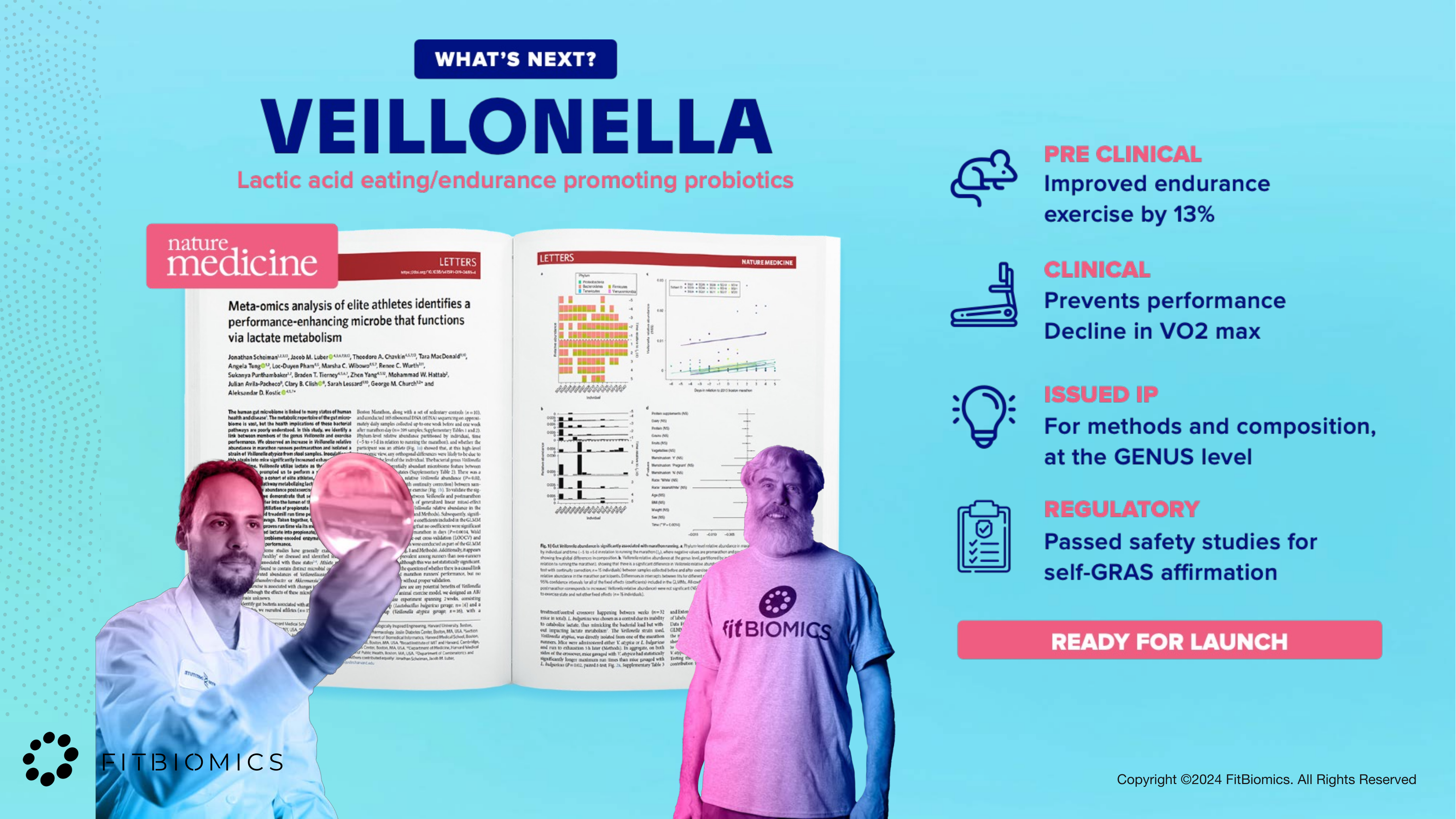
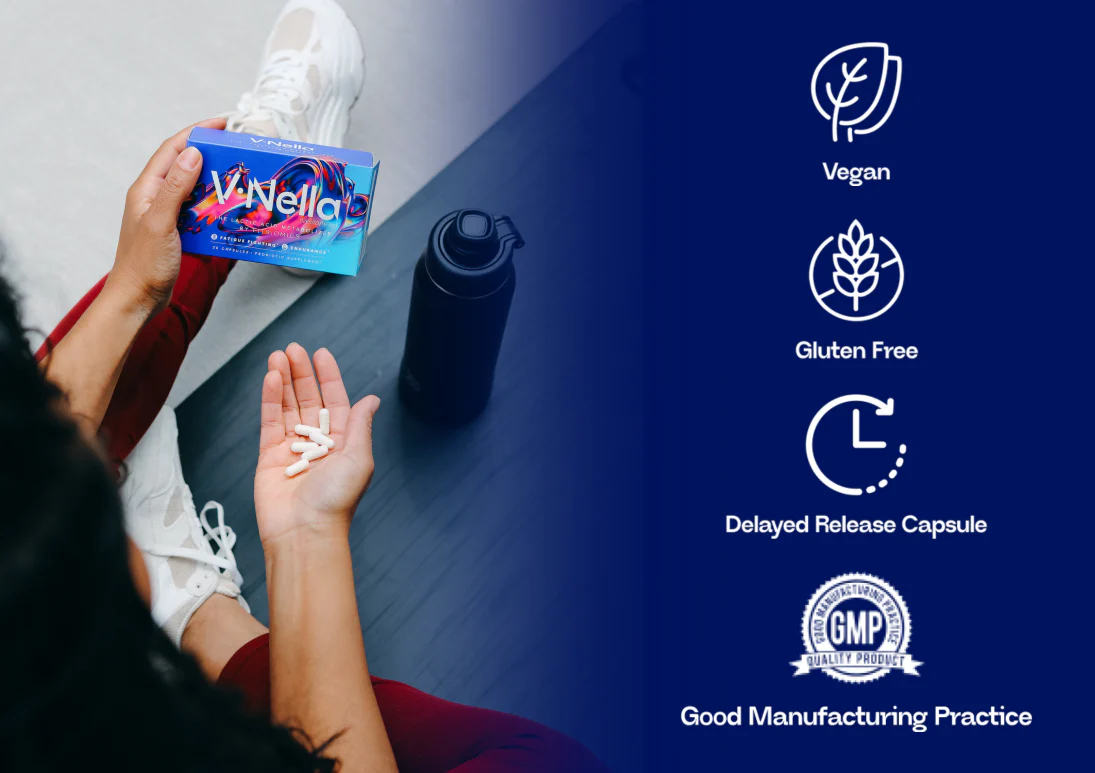
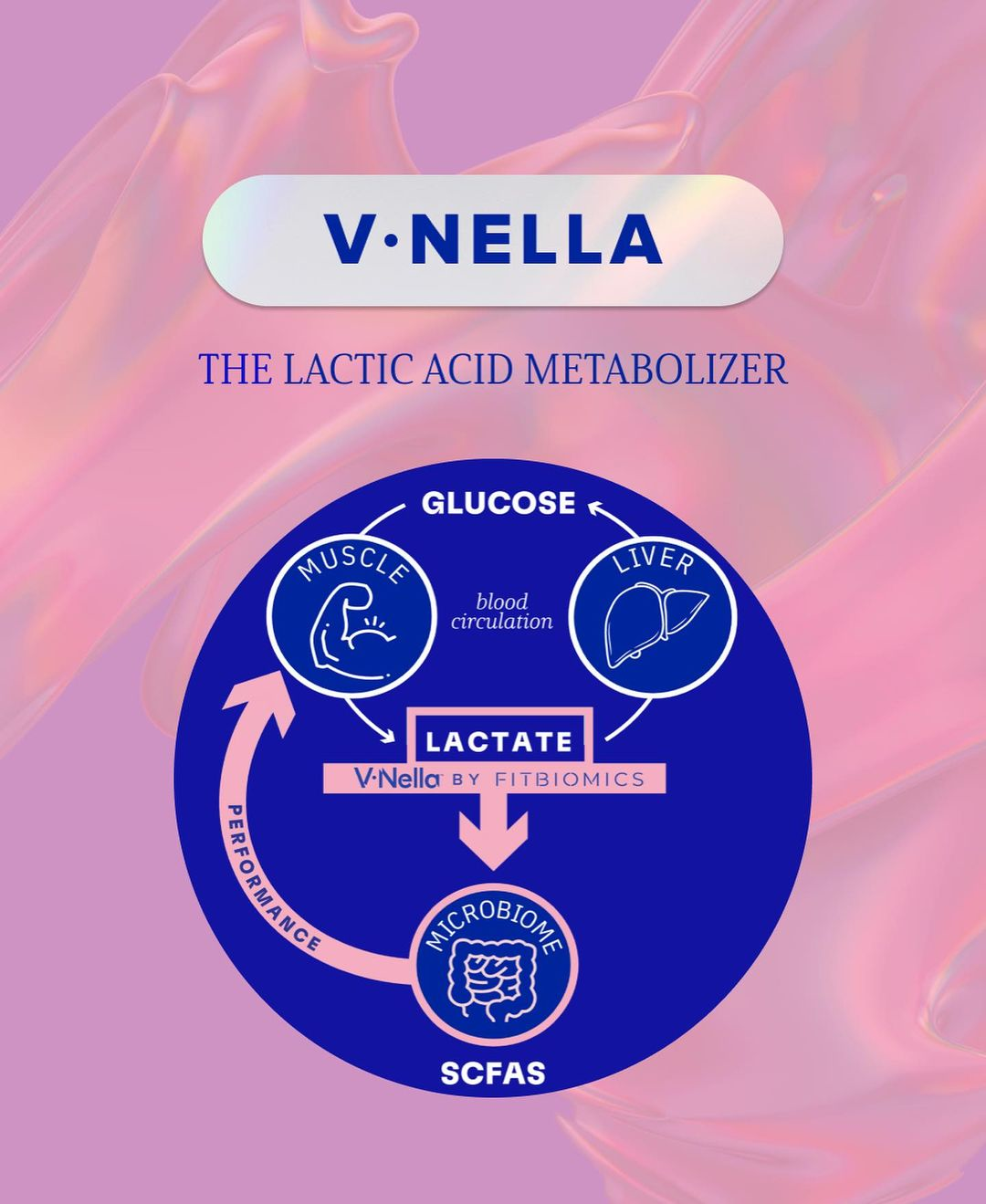
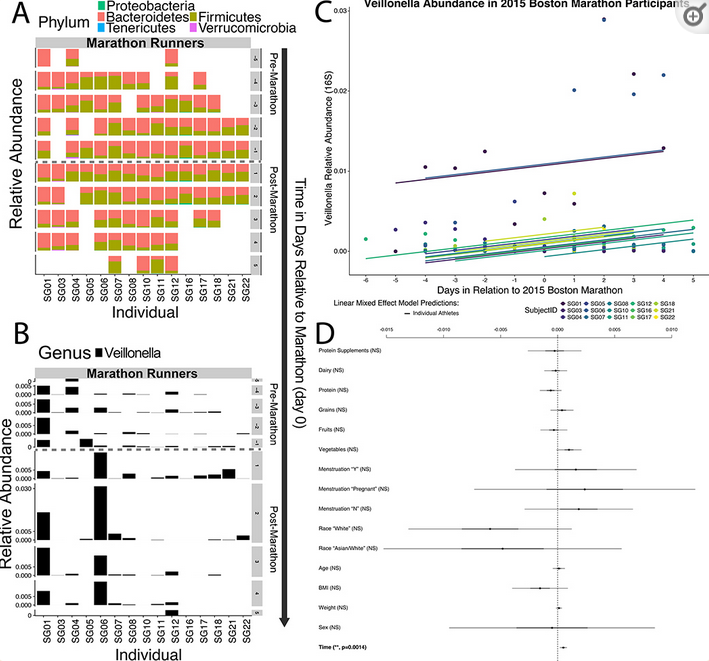
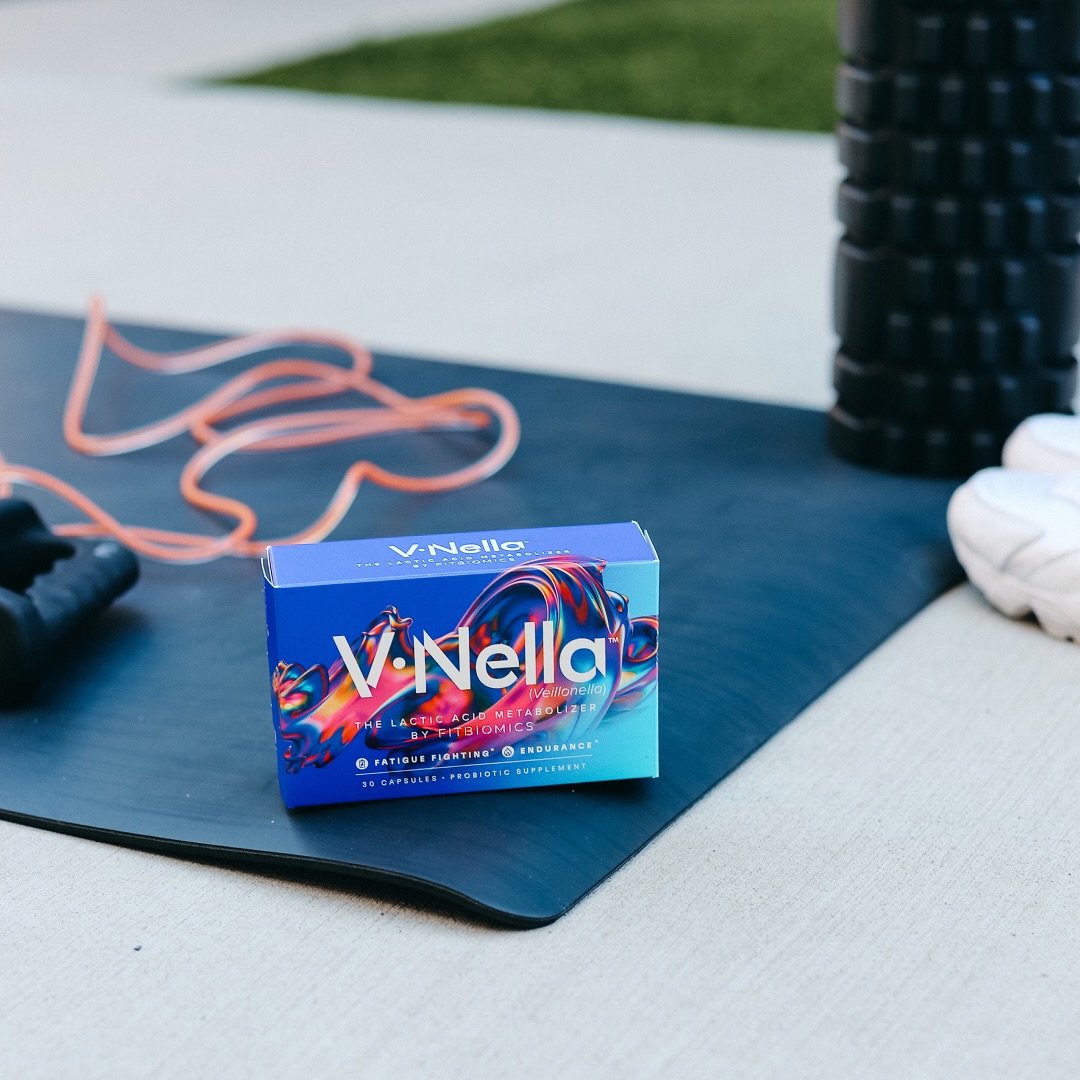
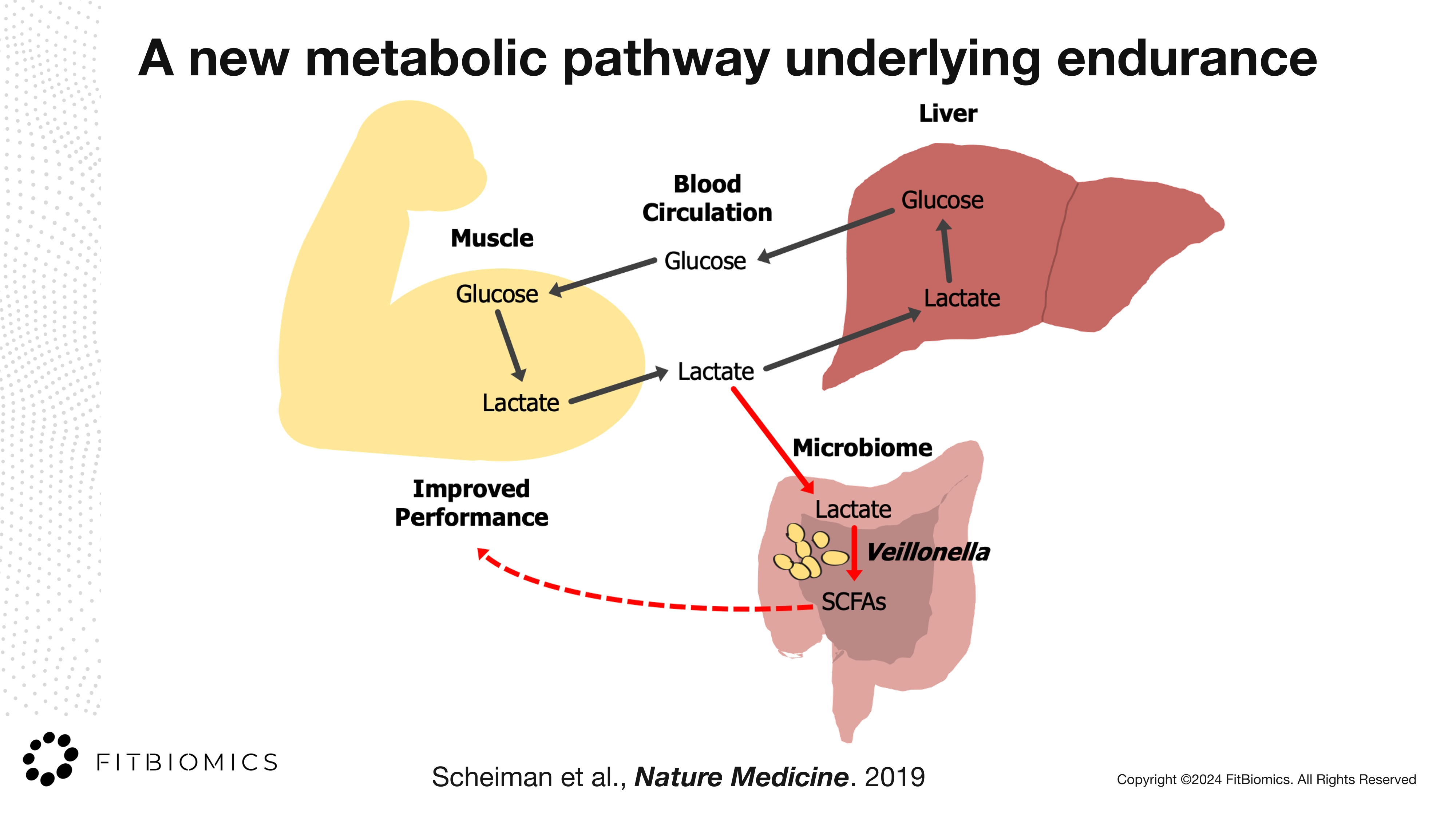
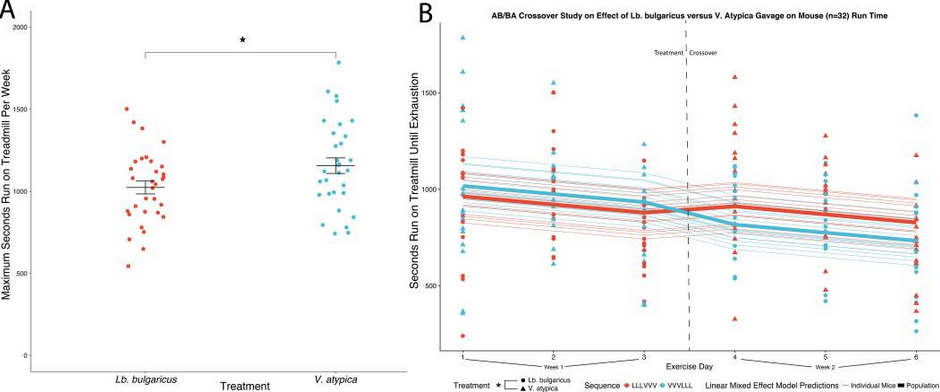

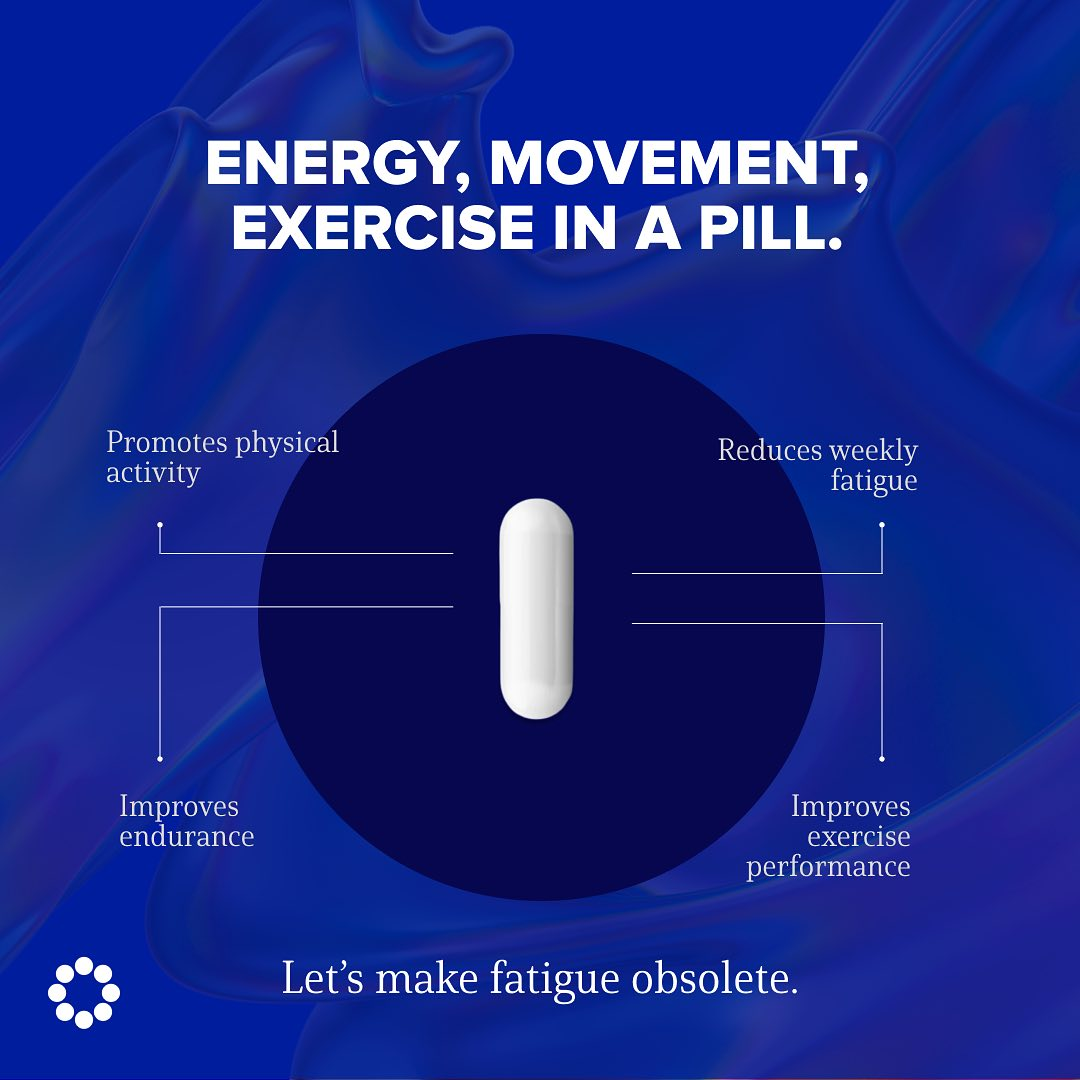
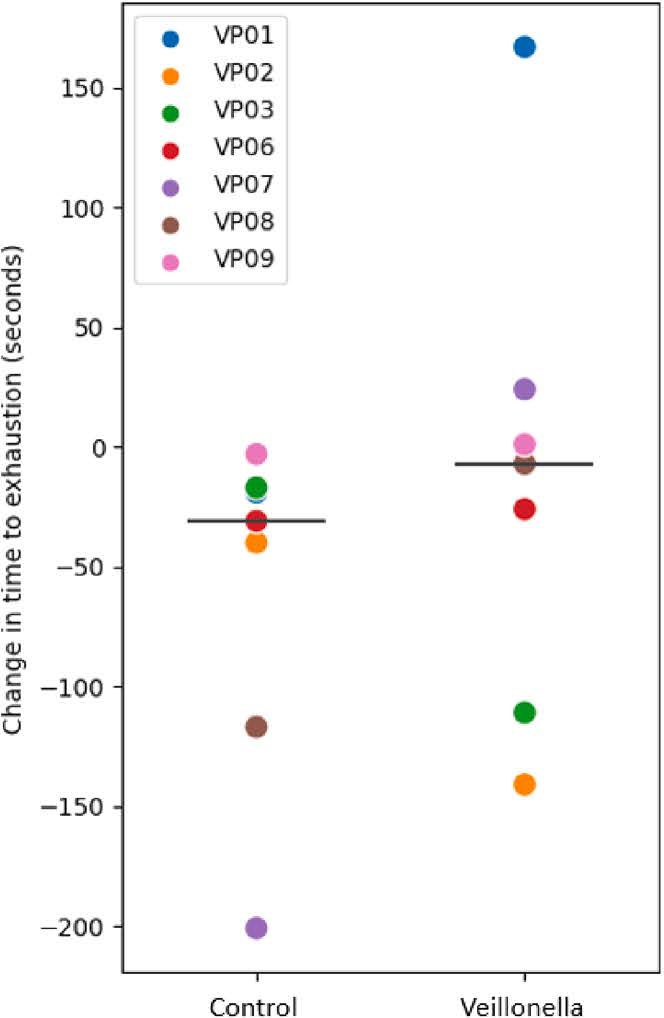

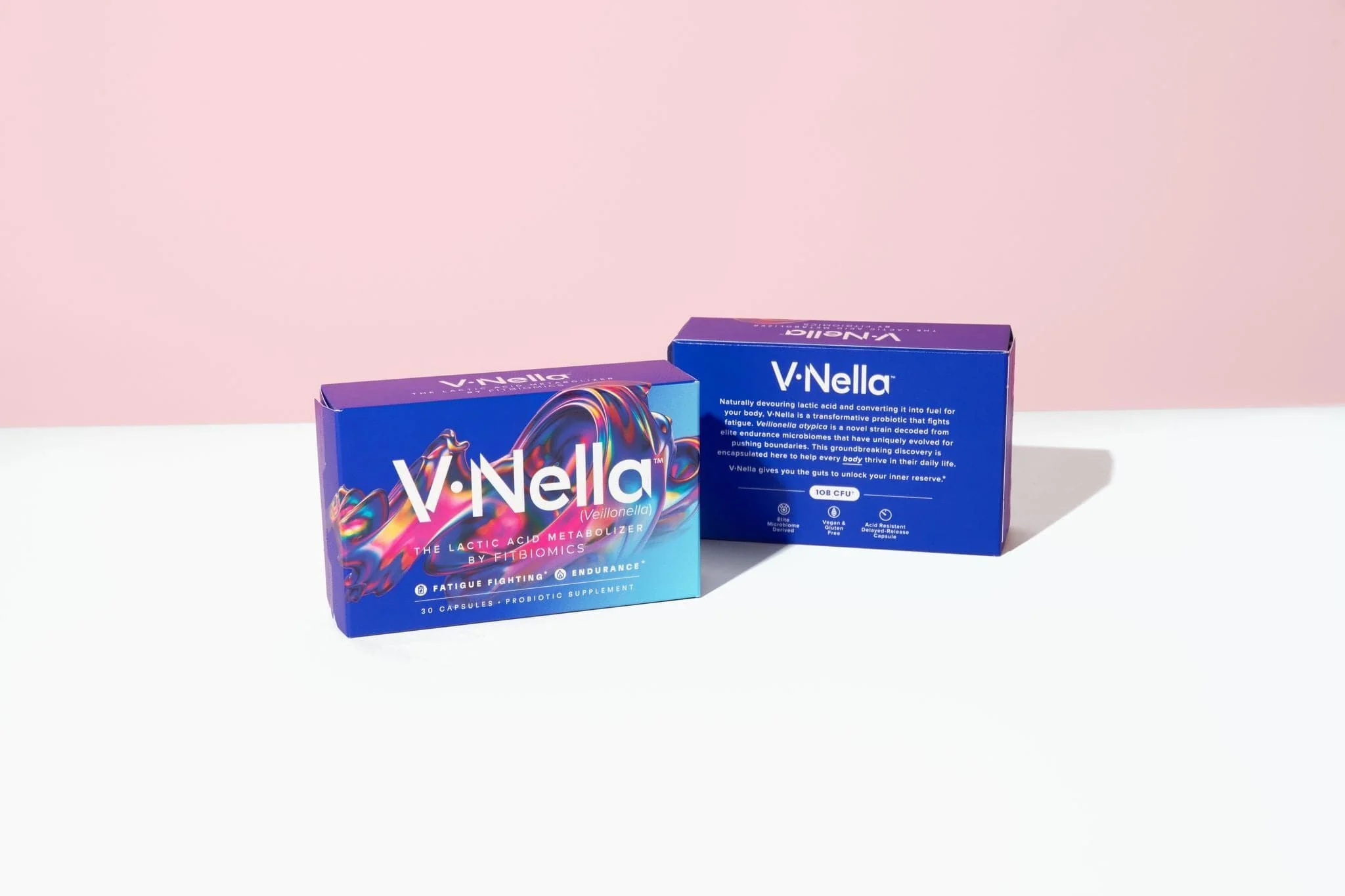
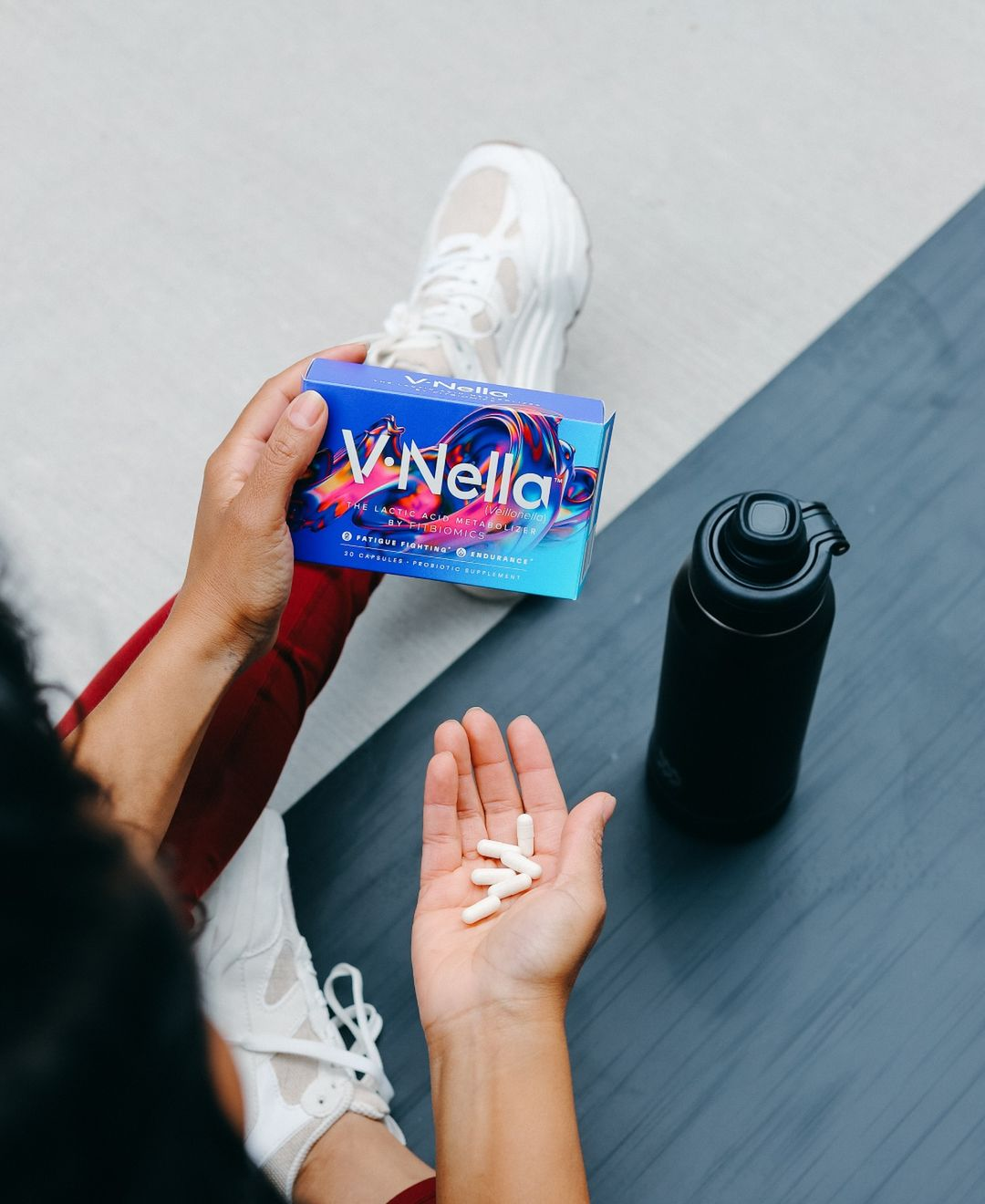



Comments and Discussion (Powered by the PricePlow Forum)